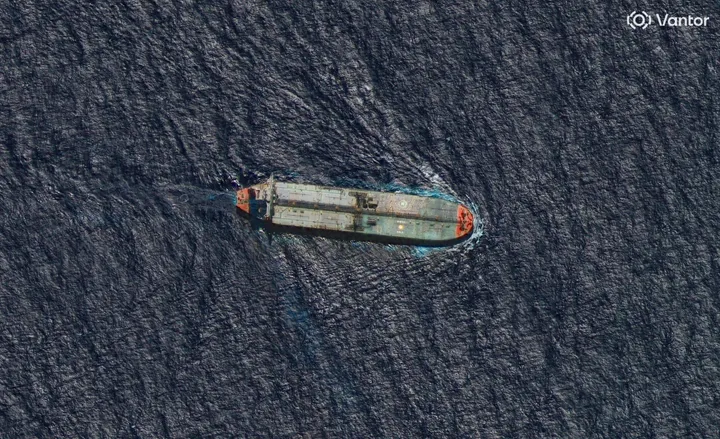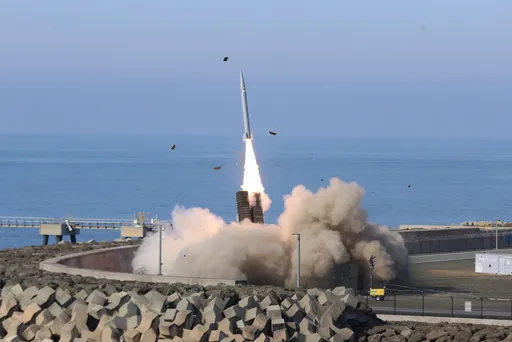NASA is testing whether it is possible to alter the course of an asteroid by sending a mission to collide into it. NASA defines the mission, DART, as “a planetary defense-driven test of technologies for preventing an impact of Earth by a hazardous asteroid.”
DART is short for Double Asteroid Redirection Test, and it was launched on a SpaceX Falcon 9 from Vandenberg Air Force Base in California on November 24, 2021. NASA calls it “a spacecraft designed to impact an asteroid as a test of technology.”
Mark R. Whittington, writing for The Hill, says that the mission will “move into the vicinity of the asteroid Didymos and its tiny moonlet Dimorphos,” a small asteroid satellite discovered in 2003.
“After escaping Earth's gravity, DART will follow its own orbit around the Sun. It will then intercept the binary as it approaches within 6.7 million miles of Earth in September 2022,” the BBCreports.
According to NASA, “DART will be the first demonstration of the kinetic impactor technique to change the motion of an asteroid in space.”
NASA will see if DART will be able to impact an asteroid such that it would change its motion “in a way that can be accurately measured via ground-based telescopic observations,” SciTechDailyreports.
SciTechDaily defines the method of ‘kinetic impact’ as “a spacecraft autonomously navigat[ing] to a target asteroid and intentionally collid[ing] with it.”
NASA’s test aims to gather data to help humanity deal with a potentially catastrophic impact of an asteroid that might pose a danger to Earth, if one were ever to be discovered.
As NASA notes: “DART’s target asteroid is NOT a threat to Earth. This asteroid system is a perfect testing ground to see if intentionally crashing a spacecraft into an asteroid is an effective way to change its course, should an Earth-threatening asteroid be discovered in the future.”
According to NASA, only 40 percent of asteroids larger than 140 metres in size have been discovered, so this is a cautionary step to prevent one from getting too close to and threatening to impact Earth. The BBC reports that the focus on asteroids larger than 140 metres is due to the US Congress directing NASA in 2005 “to discover and track 90 percent of near-Earth asteroids larger than 140m.”
NASA says the DART spacecraft will crash into the moonlet Dimorphos at a speed of approximately 6.6 km/s: “The collision will change the speed of the moonlet in its orbit around the main body by a fraction of one percent, but this will change the orbital period of the moonlet by several minutes - enough to be observed and measured using telescopes on Earth.”
"DART will only be changing the period of the orbit of Dimorphos by a tiny amount. And really that's all that's needed in the event that an asteroid is discovered well ahead of time," Kelly Fast, from NASA's planetary defense co-ordination office, tells the BBC.
Commenting on the launch, she says: "We're not out of the woods yet, we've got to get out to Dimorphos, but this is a huge step along the way."
SciTechDaily reports that “Since Dimorphos orbits the larger asteroid Didymos at a much slower relative speed than the pair orbits the Sun, the slight orbit change resulting from DART’s kinetic impact within the binary system can be measured much more easily than a change in the orbit of a single asteroid around the Sun.”
The kinetic impact of DART will “shorten Dimorphos’ orbit by several minutes,” SciTechDaily writes, and the measurements from Earth telescopes will be put to use to “both validate and improve scientific computer models that are critical to predicting the effectiveness of kinetic impact as a reliable method for asteroid deflection.”
The BBC points out the significance of shortening Dimorphos’ orbit by several minutes: “It's a very small shift, but it could be just enough to knock an object off a collision course with Earth.”
"There are a lot more small asteroids than there are large ones and so the most likely asteroid threat we ever have to face - if we ever have to face one - is probably going to be from an asteroid around this size," Tom Statler, the mission's program scientist at NASA, tells the BBC.
The BBC reports that while DART will be using the kinetic impactor technique, “there are other ideas, including moving the asteroid more slowly over time and even detonating a nuclear bomb - an option familiar from Hollywood movies such as Armageddon and Deep Impact.”
























